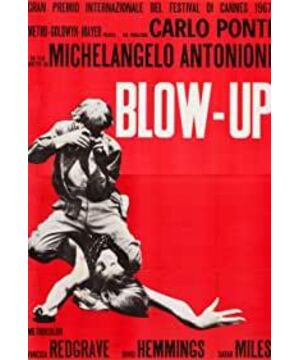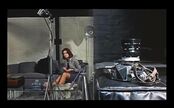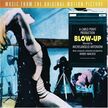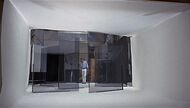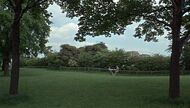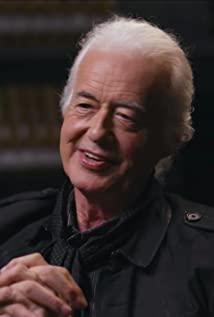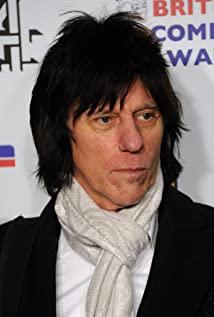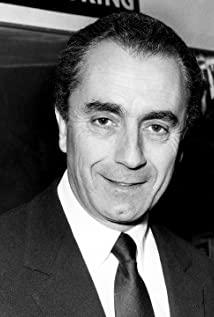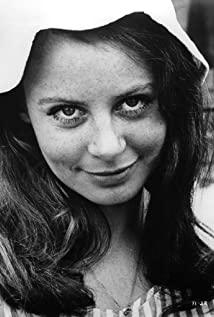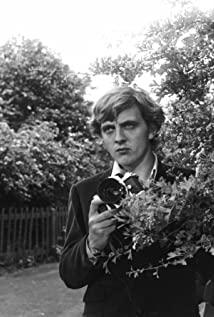The first time I watched "Zoom" was also the first time I watched Antonioni. At that time, I mainly watched Antonioni’s famous name and Palme d’Or. As for Cortazar, I just heard about it and never really read it. I don't know the relationship between "Zoom" and Kotazar's short story "The Devil's Saliva". After reading "Southern Expressway", the first one included was "The Devil's Mouth". Halfway through the reading, I felt very familiar, and then I remembered "Zoom". After inquiring, I found that the latter was adapted from the former. .
Although that is said, the relationship between "Devil Saliva" and "Zoom" is not tight, and I can see this more clearly when I read the former and then revisit the latter. As the main writer of the explosion of Latin American literature, Cortazar's works are also symbolic and fantasy, but they are not as strongly attached to regions and nations as Marquez's magical realism. He himself later settled in Paris, and his works either set the background in Europe or simply put it in an overhead context, and as revealed in his wonderful collection of miniature novels "The Story of Kronopio and Fama", Before the strong writing skills and narrative passion, the content and themes he wrote are second. The same is true for "The Devil's Saliva". Its magic is so deeply rooted in the flowing form of text that it is almost impossible to visualize them, or at least it is impossible to restore the novel. It gives people a feeling (after thinking about it, perhaps only the methodology of Reina and the Left Bank can approach, such as the distant connection between "Hiroshima Love" and "Secret Weapon").
In the opening scene of Cortazar's novel, the vague narrator's separation method shows that this is a narrative game. After that, he cleverly used punctuation throughout the story to remind the form of this game at all times, so that it has been extended. To the photographer's reverie on the content of the photo, and in that part completed the climax of "Devil's Saliva". The opening of "Zoom", a self-proclaimed adaptation of the work, is quite popular in the American film style: a parallel editing composed of two groups of characters meets, just like the opening of Hitchcock's "The Train Strangers". Of course, what is different from the general purpose of this opening method is that two groups of characters—the photographer (that is, the male lead) and a group of mime actors who drive in a car—after meeting, except for these people to the male lead Apart from the almost meaningless plot of asking for some money, nothing else has been collided, and the following plot development has nothing to do with this opening. But this "meeting" is described in detail and placed in the opening scene, which shows that the creator attaches great importance to it, and indirectly implies (corresponding to it) the meeting of the two groups of characters at the end. Not only did the two episodes echo the beginning and the end, but the tennis court at the end also appeared at the beginning. The reappearance of fashion photography models at drug parties is also a humorous echo. In this way, the created structure is condensed into one Stable and closed narrative system. From this point of view, "Zoom" has already deviated from the subversion of the narrative like "The Devil's Saliva", and the resultant, extraordinary fluidity.
However, such a comparison cannot be a reason to criticize the film. After all, it is unreasonable to require the film to be faithful to the original, after acknowledging the difficulty (un)imaginable of the original. But when we examine what changes Antonioni made to "The Devil's Saliva", it also helps to further understand the film and the director's creative intentions.
The most obvious is that the almost vacuum of writing background in "The Devil's Saliva" was embodied in London in the 1960s, and many sections in the film also have obvious meanings of intercepting social aspects and characteristics of the times, such as the "swinging London" era. Fashion style, rock music, drug abuse, the cultural generation gap reflected in the antique shop section, and so on. Moreover, compared to the "photographer" who is a pan-conceptual narrative perspective in the original work, the actor is also given a more specific and dual identity-he is a fashion photographer in the studio, but He also disguised himself as a beggar and took to the streets to photograph the poor, and the reason why he was reluctant to return the photos he took in the park was to use them in his photography collection. He is not, at least from the beginning, not a pure-motivated truth-seeker, but a profiteer or even an orderer who exploits the subject under his lens. This is from the fashion photography paragraph that he is habitually arrogant towards models. Dominance can be clearly seen. In this way, this identity is given a strong metaphor.
Outside the main line of "The Devil's Saliva", it is these symbolic passages that expand the length of the film, turning it from a short story into a feature-length film that lasts nearly two hours. The essential function of these paragraphs is to criticize the society in plain terms. It can be seen that Antonioni's works still have a traditional side, but the way of expression is more modern and abstract, and the meaning is less clear and implicit. And because the film as a whole does not have a solid foundation of realism, these directors selected highly generalized typical images from the whole society-women hovering between men, noisy protesters, and girls pursuing unrealistic dreams. , Enthusiastic fans robbing guitar fragments, people who are addicted to drugs at parties but do not believe in the truth-they are somewhat deliberate and self-talking in design, which to a certain extent shows the director's excessive irony and even stereotypes.
However, the narrative tone, or “tone” in Antonioni’s works, is always flat and highly realistic. This is usually a shortcoming in the perception of his works, that is, the lack of creative ability to perceive stimulation. In Enlargement, the symbolic passages that are naked and straightforward have become an advantage. Because those passages, like all other real situations in the work, are presented to the audience in a calm and realistic tone. The audience does not have a change in tone as a reminder when the audience transitions from the real situation to the symbolism, and cannot directly detect it. In fact, the director has very deliberately symbolized expressions, as if those passages are just plots tossed at will. In other words, the realistic tone helps obscure the symbolic intent.
Bertolucci, an Italian director who is also obsessed with metaphors and symbols, his "The Strategy of the Spider" is also adapted from Latin American literature (Borges "The Theme of Heroes and Traitors"), and the symbols are very deliberate, even Instead of the normal narrative, it takes the lead in the rhythm of the movie. It’s hard to imagine what would happen if Bertolucci was asked to adapt "The Devil's Saliva", or even if he was asked to shoot the script written by Antonioni, he and the photographer Storaro constructed the emotional light, tone and movement of the lens. The method will also create a perspective that is out of reality, in which the boundary between the symbolic "virtual" and the plot "real" is deliberately blurred, and the realistic tone is lost as an external disguise, and the expressive purpose will be exposed. Comparing the scenes in which the protagonist is overwhelmed by the crowd in "Zoom" and Bertolucci's "The Conqueror" (the rock scene of "Zoom", the end of "The Conqueror"), we can clearly see the difference between the different tones. Differences, although their intentions are all symbolic. In "Zoom", the actor escaped from the rock music scene and threw the snatched guitar fragment on the ground. Another person picked it up and looked at it and threw it on the ground. Antonioni only used a fixed lens to present it in silence; If you change to Bertolucci, you will have to arrange the light first, and then use the highly formalistic mechanical motion shots in "Spider's Strategy" and "The Conformer", and finally freeze on the discarded guitar fragments— —Oh my God, this will definitely ruin "Zoom"! The most important difference between Bertolucci's debut work "Reaper" and Kurosawa Akira's "Rashomon", which is often linked together, is this: No matter how much Kurosawa pursues the beauty of form, his vision and tone are the same. Realistic, while Bertolucci set the surreal tone from the first motion shot of the confetti blowing in the film.
This is a long way off, let's go back to "Zoom". If it is said that the social profiling and symbolic passages that have nothing to do with the original work are both success and failure, then the meta-concept and core theme of "The Devil's Saliva", namely the interaction between "photographic reality" and "reality", Antonioni What is the inheritance of it? Although this part has changed too much in terms of content and form of expression, it is difficult to judge whether it still has comparative value, but at least it can be said that "Zoom" has carried out a very interesting expansion of the original concept in Kotazar's novel. In addition to the two "real" interactions inherited from the novel, "Zoom" has another meta-concept-the pun of the word shoot, which means "shooting" and "shooting". These two actions are exactly the two centers of the whole plot. Since this pun is an English vocabulary, it is only natural that "Zoom" is an English film.
Looking at "Zoom" with this perspective, we will get a series of interpretations and analyses. Here we only associate some at will: "Photographing" is a harmless, that is, a shoot that does not affect reality, but its recordability is not. So that it can be used as evidence of reality; while "shooting" is a shoot with destructive power and enough to change reality. Its only weakness is that it is afraid of evidence. It can be said that the whole plot of "Zoom" can be attributed to these two shoots and their spokespersons-photographers and gunmen-tracking and wrestling around proving the authenticity of a murder case. On the other hand, no matter what kind of shoot, its tool is a kind of power device, and the holder of the device is also a power performer, which corresponds to the male protagonist’s personality setting—one occupying the gender relationship. The image of the dominant person, sitting on his knees on the model and madly taking pictures, this highly symbolic lens is strong enough to generalize the image of the character enough to make it appear on the movie poster. From this perspective, another contribution of "Zoom" is that it vividly shows us the inherent similarities between "photographing" and "shooting", "photographing" and "ejaculation", and "camera" as a weapon Or the possibility of a penis.
How did the battle of wits between the two shoots end? This also brings out the most critical difference between "Zoom" and "Devil Saliva". In "The Devil's Salivation", Kotazar is optimistic. The consequence of the interaction between "the reality of photography" and "reality" is that the former defeats the latter. Because of the photographer's intervention, the incident is disturbed, and the behavior of the teenager was originally disturbed. The deception plan was not completed. The same plot also appeared in "Zoom", but not in the ending, but in the middle. The actor excitedly called his friend and told him that he had accidentally photographed a person trying to shoot another person, but was disturbed by his photo. So the murder was attempted. But Antonioni continued the second half of the film: the actor found the corpse in the photo that he hadn't found before, and only then did he find that he hadn't changed anything. When he went to the park at night, he saw the corpse. He ran away in a panic when he heard the opening of the pistol safety latch. The next day he wanted to take a picture of the corpse, but the corpse had disappeared without a trace. As a result, the "shooting" shoot won the battle and destroyed the evidence that the "photographing" shoot wanted to leave.
This is an Antonioni pessimism who is disappointed with the modern world. From this point of view, he created an amazing ending in film history. The protagonist once again met the group of mime make-ups who drove and slapped in the car at the beginning. They rushed into the tennis court and performed a non-physical performance of pretending to be playing tennis. At the beginning, the camera was watching from the sidelines, and then as if infected by the power of no physical performance, it gradually began to shake, creating a sense of presence in a tennis match that did not exist at all. In the end, the camera also added "performance", tracing in the air the trajectory of the "tennis" that actually didn't exist. The tennis ball was beaten out of the court, and the camera made a gradually decelerating inertial motion on the ground, as if it was really chasing a rolling tennis ball. One of the performers asked the actor to pick up the flying tennis ball. The actor dropped the camera in his hand, picked up the tennis ball, and threw it vigorously towards the camera-then, gradually, the hit of the tennis match sounded. But there is no "tennis" at all! It turned out that at this time, even the sound of the movie began to "act", and the actor was completely trapped in the illusion of self-deception.
The camera is at the point of view of the actor at this time. The process of being gradually "domesticated" by the non-physical performance naturally represents the mental journey of the actor. But at the same time, don't forget the "camera" and "camera", "movie" and "movie". The analogy of "photo" is that the film creates non-existent sight and sound to deceive the audience, just as the male protagonist discards the evidence of the camera and chooses the non-existent tennis action, which is a surrender of truth to falsehood. Regardless of whether it is intentional or unintentional, "Zooming" completes the closure of the symbolic system at the end, but also generates a challenge to the media and a reflexiveness, which makes it a true magical touch.
View more about Blow-Up reviews


